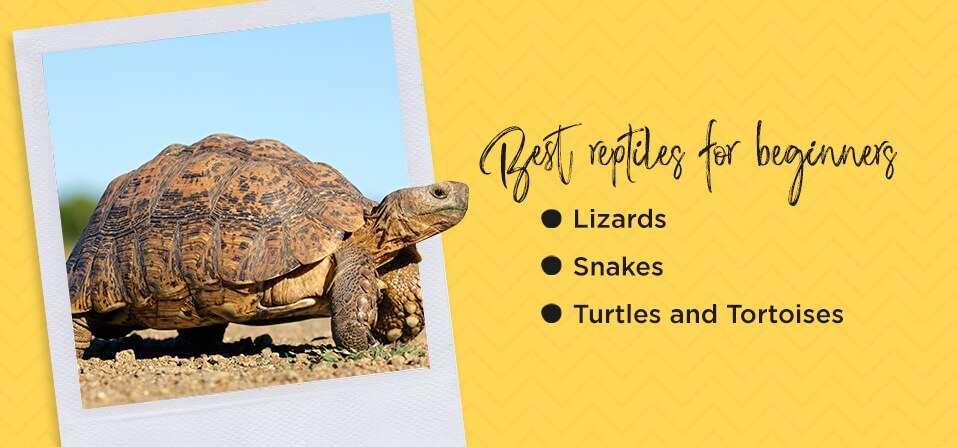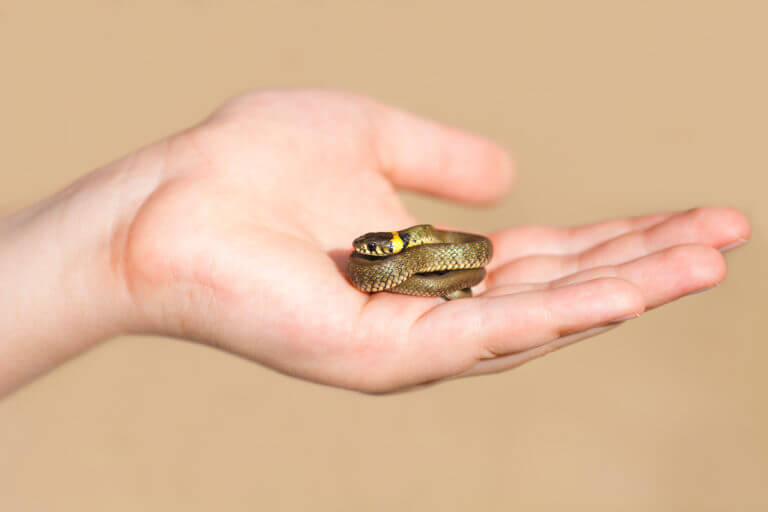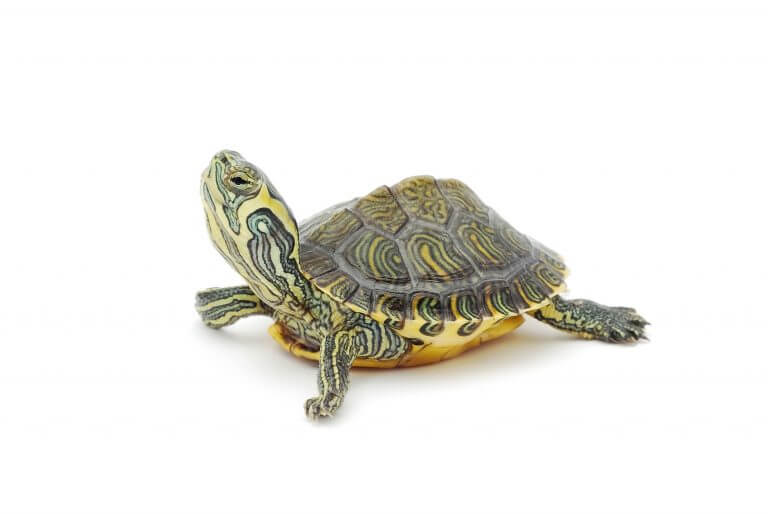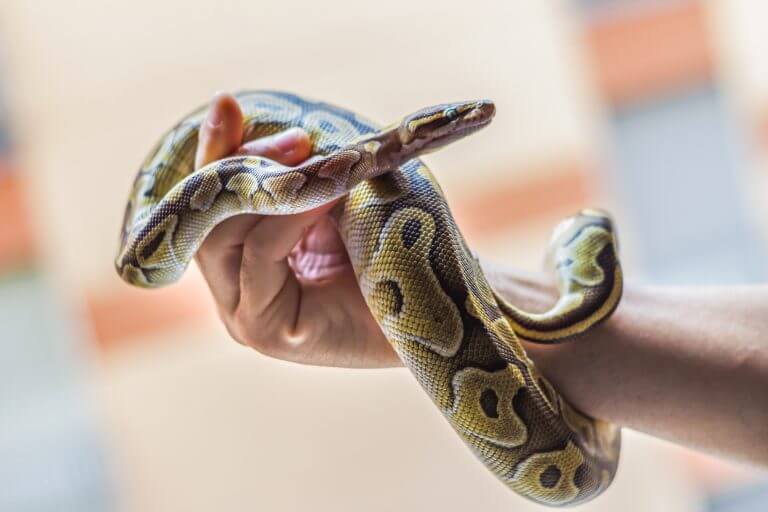
There are over 6,000 reptile species, which vary in size, shape, diet and care. They can range from the four-legged to the no-legged, animals with hard or soft shells and even some that can change color based on their situation and stress level. Because of this, their requirements as pets can diverge widely.
The thought of all these different species can seem daunting, but we can discuss many similarities to spur a new reptile enthusiast or help an existing reptile parent get back on the right track. For species-specific questions, please contact your exotic veterinarian — we are always ready to discuss options in husbandry. There are three main components to an ideal reptile habitat — heat, humidity or water regulation and the substrate or environment created in their enclosure. Read on to learn all about reptile husbandry.
- Best Reptiles For Beginners
- Regulating A Reptile’s Body Temperature
- Humidity And Water Regulation For Reptiles
- How To Avoid Common Reptile Issues
Best Reptiles For Beginners
Some reptiles require more extensive care than others. Reptile husbandry requirements can be overwhelming at first. If you’re a beginner, you’ll want to choose an “easier” reptile to welcome into your home. Here are some of the best choices for new reptile parents.
Lizards
If you’re interested in owning a lizard, try to steer away from iguanas, chameleons, Chinese water dragons and other exotic animals with highly specific needs. Instead, consider one of these options.
- Leopard gecko: Leopard geckos are small, nocturnal insectivores. They fare well in a smaller tank and do not need specialized lighting. Their temperament tends to be docile and seldom aggressive.
- Bearded dragon: Though they require a somewhat large tank and special ultraviolet lamps, bearded dragons are easy to tame, handle and feed. However, if you’re looking to save money on an enclosure, you might opt for a leopard gecko instead.
Snakes
Snakes can make excellent, low-maintenance pets. Most snakes require whole prey, live or pre-killed, which might represent a significant drawback for some pet owners. However, snakes only need to eat once a week or so, making it easy to leave a snake without a pet sitter for a few days. Here are some top snake species for beginners.
- Corn snakes: Corn snakes have easygoing temperaments and make ideal companions, living a decade or longer. Adults can grow four to five feet long and are talented escape artists, so a large enclosure with a tight lid is necessary.
- Ball pythons: Ball pythons are one of the most common pet snakes. They have long lifespans in captivity and take well to handling. However, ball pythons are notoriously picky eaters. It might take some coaxing to keep your ball python well-fed.
Turtles And Tortoises
You might find turtles and tortoises are more challenging to care for than you’d expect. Aquatic turtles have somewhat complex environmental needs, and tortoises grow exponentially over their long lives. If you decide to start with a turtle or tortoise, the best choice is an eastern box turtle.

While these turtles can live several decades, they only grow about half a foot long. They’re also much more adaptable than their relatives, living in varied climates and eating omnivorous diets. Without aquatic requirements, they’re much easier to care for than other turtle species.
Regulating A Reptile’s Body Temperature
All reptile species have a preferred optimum temperature range (POTR) at which they are physically and medically at their best. As cold-blooded animals, reptiles rely on external heat sources for thermoregulation. Being in their POTR affects a reptile in all aspects of their daily life. It can impact their appetite in that the cooler they are, the lower their metabolism will be. A pet with a lower metabolism needs fewer calories to continue its daily function.
POTR will also affect their immune system. Studies have shown that maximum immune response occurs when reptiles are within their POTR. In other words, they are better at fighting infection. Just as temperature affects their metabolism, it also affects their activity level, so if a reptile seems lethargic, it could often be because it lacks the appropriate heat source.
A good rule of thumb for most species is to maintain a hot spot in the enclosure near the upper end of the POTR — generally in the upper 80 to 90 degrees Fahrenheit for most species. We recommend avoiding hot rocks or other heat sources that the pet can touch, as they can lead to dermal burns. Another misconception is that reptiles only need heat during the day. Often, the POTR for the evening is only five to 10 degrees cooler than their day temperature, which would put it at approximately 70 to 80 degrees.
Humidity And Water Regulation For Reptiles
Humidity and water regulation have different meanings for various species. Maintaining the correct humidity levels can be challenging. First things first, you’ll need to choose the right kind of enclosure for your reptile, featuring all the necessary elements.
An aquarium can work well for some reptiles. Remember, an aquarium has a tall and narrow shape, not allowing much airflow. If your reptile requires misting or likes to climb vertically, an aquarium is not the best option. Choosing the right water dish is also essential, as a water dish will add to the enclosure’s humidity level. You’ll need to use a proper substrate, which you can read more about in the following section. You might also create a humidity hide box — you can make one out of plastic with moist moss, like sphagnum, and a small opening cut into the lid.
When creating your reptile’s enclosure, be sure not to compromise ventilation. Stagnant air can lead to fungi and bacterial growth, causing infection. Some species, such as chameleons, can benefit from a vaporizer or humidifier used directly or indirectly with the enclosure.
It’s crucial to keep tabs on humidity and water levels. You’ll need to purchase a device called a hygrometer when setting up a reptile tank, which measures humidity. Use one that can secure to the inside of your reptile’s enclosure with a suction cup. A hygrometer is a necessity for any reptile habitat.
Use Proper Substrates
Another essential factor in keeping a captive reptile is the substrate you use. A substrate is a material used at the bottom and within the enclosure. Some examples of appropriate substrates are shredded newspaper, cypress wood chips, stones that are too large for your reptile to eat and shredded coconut shells. Many of these substrates can also help achieve appropriate humidity levels. Ensure your pet is not eating the substrate, as this could lead to a blockage.
For many, this has just scratched the surface of reptile husbandry and care, but starting with the fundamentals of reptile housing is essential to keeping them happy and healthy. Many of the problems and illnesses we see with reptiles are due to poor or inadequate husbandry or diet.
Whether they are arboreal, terrestrial or aquatic, a reptile’s origin can give you a lot of insight into how to house and care for it. While not all reptiles enjoy interacting with humans, many can enjoy occasional handling as long as the encounter is stress-free. Like mammals, all reptiles have distinct personalities, and learning these unique quirks is as much a part of taking care of them as cleaning the enclosure.
How To Avoid Common Reptile Issues
Reptiles are prone to specific diseases and other health issues. It’s crucial to recognize the signs of reptile health concerns, so you can treat them and avoid them in the future. Here are some signs of a sick reptile to watch for.
- Unusual excretions or diarrhea
- Refusal to eat or notable weight loss
- Unusual mouth discharge or vomiting
- Trouble breathing, sneezing or coughing
- Lethargic attitude
If you notice any of these symptoms, contact a pet care professional right away. Read on to learn about reptile health issues and how to avoid them.
Bacterial And Viral Infections
Like any animal, reptiles are sensitive to bacterial and viral infections. Here are some typical reptile infections to look out for.
- Ear infections: You can tell your reptile has an ear infection if you notice bulging, pus or signs of sensitivity around the area.
- Amebiasis: A common parasitic infection, amebiasis is most likely to affect carnivorous reptiles, as it can derive from raw meat. You might notice digestional issues or signs of stomach pain.
- Herpesvirus: Herpesvirus is a viral infection, causing mouth sores and itchiness. If left untreated, it can damage the liver or digestive tract. It’s most prevalent in turtles and tortoises.
To avoid infections, ensure your reptile’s enclosure is clean and well-maintained. Adjust your humidity and temperature levels as necessary. Clean up feces, food remains and other possible contaminants. If you have other pets, keep infected reptiles away from them to limit spreading. If your pet has an infection, you may need to administer medication.
Diseases

Reptiles can also contract common diseases resulting from infection, poor diet or incorrect humidity or temperature. Frequent diseases among reptiles include the following.
- Cloacitis: Cloacitis involves vent inflammation — the vent is where reptiles release urine and feces. Stones, clogs or infections can cause this issue. Medication might be necessary to reverse it.
- Metabolic bone disease: Often caused by insufficient vitamin intake, metabolic bone disease can result in bowed legs, deformities or soft shells for turtles.
- Mouth rot: Mouth rot, or stomatitis, involves mouth sores or infected mouth tissue. Poor living conditions or diet can result in this condition. In extreme cases, your reptile may need surgery to fix mouth rot.
To avoid these diseases, ensure your reptile has an ideal habitat. Keep a careful eye on humidity and temperature, and clean the enclosure often. Include an ultraviolet light if needed. Also, feed your reptile a well-rounded diet with plenty of vitamins.
Contact University Animal Clinic To Learn More
Reptiles make excellent pets for experts and beginners alike. Taking care of a reptile involves creating the best possible enclosure, offering a well-balanced diet and regulating temperature, water and humidity levels. If you have any questions about reptile care, feel free to contact University Animal Clinic today! If you’re a reptile owner in the Sarasota area, bring your lizard, snake, or turtle into our clinic next time they need a vet visit! Book your appointment online today!
